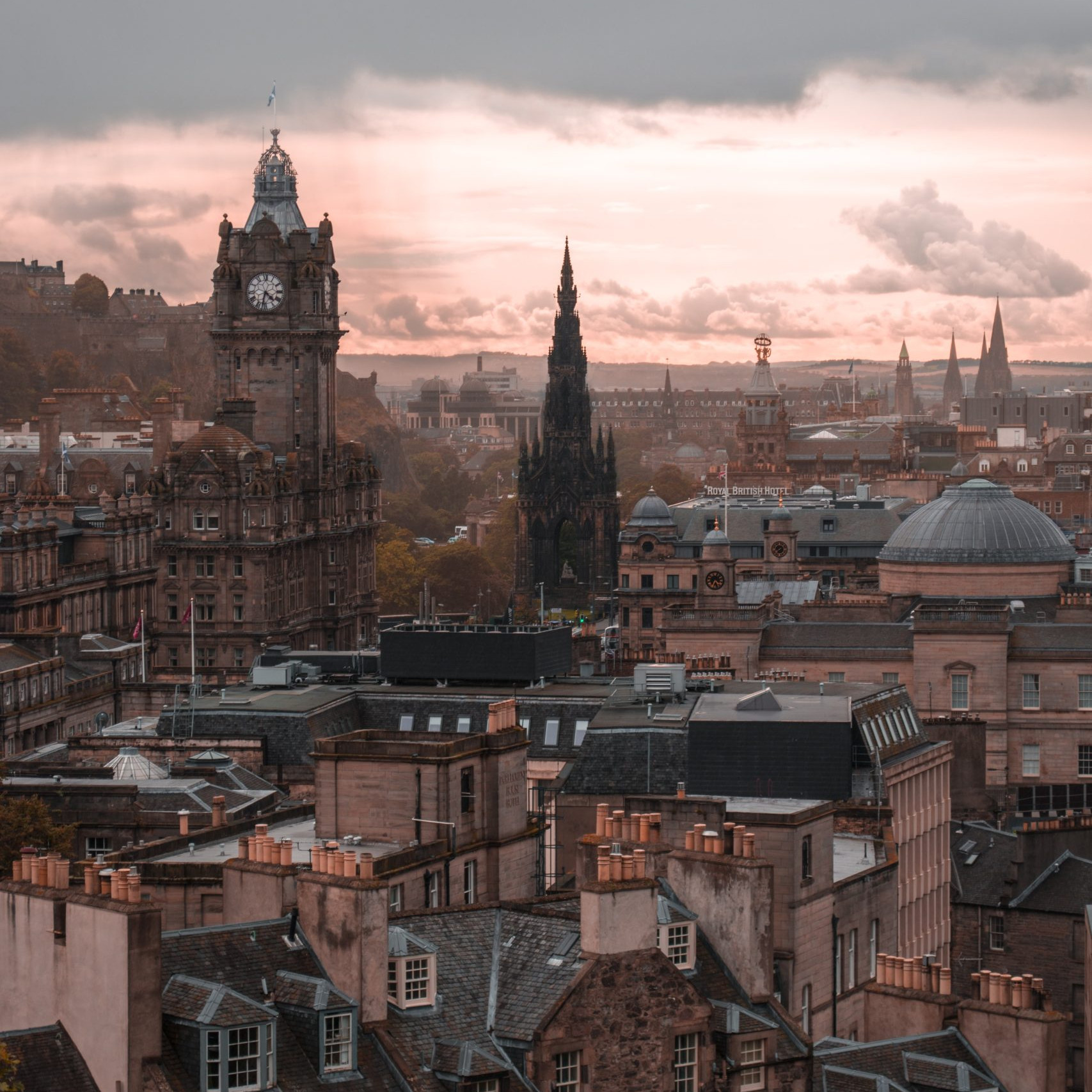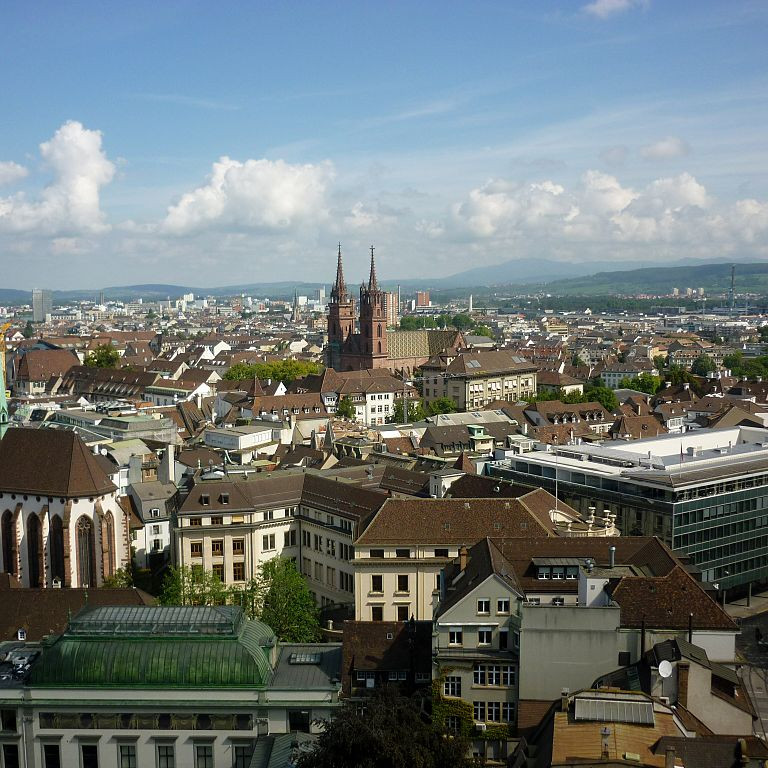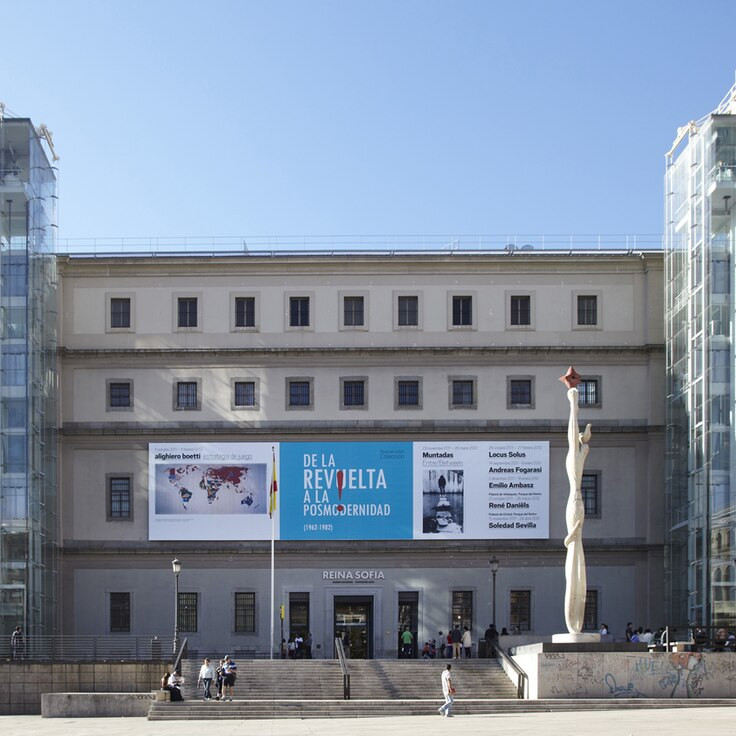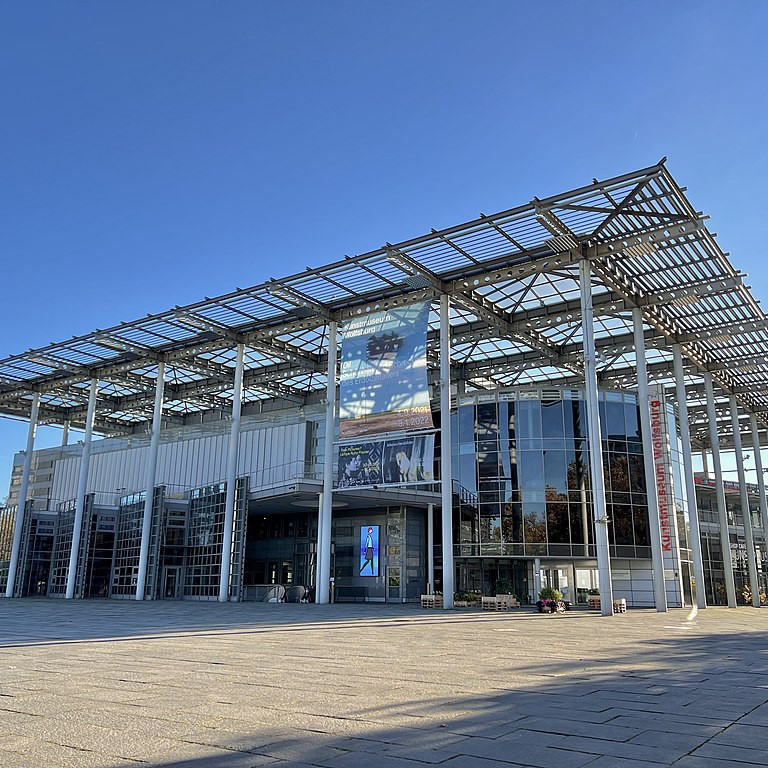Edimburgo 2012
Mese: Settembre 2023
VIII conferenza europea dei registrar di opere d’arte

Quando:
5-6 novembre 2012
Dove:
Edimburgo, Pentland Auditorium
Think smart!
Le risorse pubbliche diminuiscono: questa la premessa e il quadro di riferimento di quasi tutti gli interventi alla conferenza di Edimburgo. La crisi economica travolge le amministrazioni pubbliche dei paesi europei e impone ai musei e ai luoghi della cultura di mettere in campo nuove idee e un nuovo approccio al lavoro. Come possono i direttori delle collezioni e i registrar far fronte alle enormi difficoltà legate ai tagli? Questo il senso del think smart titolo del convegno.
Qualche proposta?
Con la diminuzione delle risorse è necessario rinvigorire l’offerta culturale con modalità semplici e convenienti. Ad esempio rispondendo alla domanda di approfondimento culturale del pubblico con un maggiore impegno curatoriale e divulgativo.
In un brillante intervento Paolo Viscardi, naturalista e curatore dell’Horniman Museum & Garden di Londra, ha dimostrato come attrarre la curiosità del pubblico approfondendo gli studi sugli oggetti delle collezioni per offrire informazioni non banali. Il loro museo ha scelto di incrementare l’accesso alle collezioni in deposito e di rafforzare i vantaggi del lavoro di collaborazione con progetti come “Object in focus”: singoli oggetti non particolarmente valorizzati nel museo sono reinterpretati e esposti in piccoli musei locali che diventano partner co-organizzatori. Un approccio più intelligente ai prestiti rappresenta cioè una via per massimizzare le potenzialità delle collezioni, sviluppando le collaborazioni tra le parti e supportando il settore e la propria organizzazione.
I Musei di Leeds invece hanno puntato sulla formazione e sulla collaborazione con l’Università e le amministrazioni locali. Nel 2009 hanno sviluppato un modello formativo per i futuri registrar, un
progetto specifico di internship presso i musei indirizzato a laureati con l’obiettivo di favorirne l’ingresso nel settore. Il training, di qualità molto alta e in parte retribuito, è basato, oltre che sull’esperienza pratica, anche sulla conoscenza dei musei e delle discipline legate al lavoro nel museo. Il programma di stage consente allo studente delle scuole di specializzazione post-laurea di Storia dell’arte e Studi culturali dell’Università di Leeds di acquisire l’esperienza del lavoro di registrar presso i musei nazionali e locali. E nello stesso tempo lo studio universitario fornisce la conoscenza necessaria per inquadrare il ruolo di registrar nel giusto contesto.
L’intervento di un gruppo di registrar francesi dell’AFROA è stato dedicato alle mostre e alle collezioni itineranti, con cui i musei francesi cercano nuove entrate finanziarie. Se fino a pochi anni fa infatti le esposizioni itineranti delle collezioni riguardavano principalmente musei in ristrutturazione, ora si tratta di progetti che rispondono al crescente problema di autofinanziamento.
Il Grand Palais, che non ha collezioni proprie ed è solo organizzatore, nel biennio 2011-12 ha co-organizzato 13 mostre itineranti con collezioni di altri musei. Il Centre Pompidou e il Lovre hanno aperto nuove sedi (Centre Pompidou Metz e Louvre Lens). Diversi progetti mirano a valorizzare le collezioni museali con mostre in sedi nazionali e all’estero presso istituzioni co-organizzatrici interessate anche al know-how dei musei francesi che così “esportano” addirittura i curatori e i registrar. Come nel caso della mostra itinerante organizzata in Azerbaijan da registrar francesi che sono stati là per due mesi per programmare i trasporti e per formare il team locale. Dai paesi ex sovietici, piuttosto ricchi e con disponibilità di risorse, viene infatti una forte domanda culturale nei confronti dell’Europa.
Per i musei francesi insomma è diventato normale condividere con altre istituzioni l’organizzazione di mostre in entrata e in uscita. Ciò implica una nuova gestione da parte del museo.
Dal punto di vista dei registrar come si gestiscono queste iniziative? Come condividere responsabilità, costi e organizzazione? Quali sono i nuovi compiti dei registrar?
In un workshop organizzato a Parigi nel giugno del 2012, AFROA ha raccolto le esperienze di 30 registrar e exhibition co-ordinator in materia di costi e responsabilità condivisi; richieste di prestito; trasporti e accompagnatori; contratti; assicurazione; conservazione. I risultati dell’indagine saranno pubblicati sul sito dell’associazione AFROA.
Le registrar francesi hanno concluso dicendo che gli strumenti i più utili per affrontar le nuove sfide si riassumono così: anticipare – comunicare – condividere.
Think fair! Il registrar è sempre più un project manager.
Altri interventi e sessioni parallele hanno riguardato argomenti specifici, tra cui la garanzia governativa nel rapporto con i privati, due diligence, immunity from seizure, gli standard europei nel campo dei trasporti e anche un intervento di un rappresentante dei comitati egiziani di registrar, curatori e conservatori nati dopo gli eventi della “primavera araba” per inventariare e documentare i danni e redigere elenchi delle opere perdute.
A conclusione dei lavori, i saluti delle varie associazioni presenti e l’arrivederci a Helsinki, sede della prossima conferenza, nel giugno 2014.
Plenary Session 1: Think Smart! Partnerships and Sharing
Opening introductions
Jon Astbury, Chair of the UKRG
Reform and Cuts
Jeff Dunn, Glasgow Museums
Smarter Loans
Sally Colvin, Museums Association
Objects in Focus – Smarter Loaning
Helen Merret & Paolo Viscardi, Horniman Museum, London
Sharing Collections
Jacqueline Ridge, National Galleries of Scotland
All panel discussion and open floor debate
Chair Kate Parsons, Tate, London
Parallel Session 1: Think Smart! Partnerships and Sharing
Museum partners with model maker’s guild to save collection
Lynn-Marie Richard, Maritime Museum, Halifax, Nova Scotia, Canada
Think Smart – Registrar training for the future
Jen Kaines, A Harrison Moore, & Cassia Pennigton
Due diligence
Freda Matassa, Freelance Registrar, London
The importance of materials & case construction
National Galleries of Scotland Technicians with Momart
Shipping & Couriering Objects by Air
David Giles, Momart and Duncan Capp, Constantine
Parallel Session 2: Think Smart! Digital
The narrative of objects: conservation, capture and collaboration
Arielle Juler and Paul McNulty, National Galleries Scotland
Towards a paperless print room
Sheila Perry and Ottavia Tonelli, National Galleries Scotland
The ups and downs of collections and technology
Tracey Berg-Fulton, Pennysylvania, USA
Touring Exhibitions – Contracts and Public Bids from an Agent’s Perspective
Ben Adams, Constantine, LP Art, France and SIT, Spain
The importance of materials & case construction
National Galleries Scotland Technicians with Momart
Shipping & Couriering Objects by Air
Stuart Brown, Momart and Duncan Capp, Constantine
Parallel Session 3: Think Smart! Moral, Ethical & Practical Considerations
Shared Liabilities
Blackwall Green
Public Benefit and Private Interest
Daniel Slater, White Cube, London
After the Revolution
Ghada Tarek and Doha Fathy, Egyptian Museum, Cairo, Egypt
Stop me if you’ve heard this one before: the loan of the Cyrus Cylinder to Iran
Dean Baylis, British Museum
The New European Packing and Transport Standard
Freda Matassa, Florence Caillieret, Valerie Haerden, Cindy Zalm
Smarter Exhibitions
Jane Knowles, Royal Academy, London and Francesco Donadio, Constantine
Project Management for Museum decants
Mark Hunt, Constantine and the Imperial War Museum
Object Movement & Technical Project Management
John Kidd, Momart
Customs Awareness
Steve Gourley, Momart
Plenary Session 2: Think Smart! Income Generation
Maximising your collection: creating a touring exhibition with AFA
Jennifer Hefner and Anna Evenhouse, American Federation of Arts
Touring Exhibitions and Collections
M. Etave, R. Beaujean-Deshamps, L. Petit, K. Cartacheff, V. Lagane, S. Maziere, France
Concessions for cash or the new way forward?
Janice Slater, National Gallery of Scotland
Closing Address and hand over to the 2014 Organising Committee
Diventa socio di Registrarte per vedere tutti i contenuti
Amsterdam 2010
Mese: Settembre 2023
VII conferenza europea dei registrar di opere d’arte

Quando:
8-9 novembre 2010
Dove:
Amsterdam, Concertgebouw
La settima conferenza europea dei registrar ERC2010 è stata organizzata dal Netherlands Registrars Group – NRG, presso il Concertgebouw di Amsterdam.
Il programma, incentrato sul tema Being Green, ha visto alternarsi sessioni plenarie, workshop e seminari, in cui sono stati trattati vari argomenti come la sostenibilità in ambito museale e l’utilizzo di sistemi di gestione, nonchè di pratiche e procedure “verdi” a fronte di un contesto legislativo, relativo alla circolazione delle opere d’arte, sempre più complesso.
Di seguito si riportano i temi e gli interventi affrontati.
Welcome, Introduction, Wrap up
Cindy Zalm, chair Netherlands Registrars Group
Michiel Nijhoff
Paul Spies
Max Meijer
Keynotes
Museums, Registrars and Sustainability
Maurice Davies
Air Freight Safety – European Legislation on Air Freight, Air Freight Safety and Cargo Screening
René Italiaander
TSA (Transportation Security Administration) in the USA
Scott Pfeifer
A Carbon-Neutral Research Centre for Beauty
Randy Klinger
Lending to Europe: an update
Frank Bergevoet
The Art of Transitions to Become Green
Derk Loorbach
Procedures at Museum Ludwig, Cologne
Beatrix Schopp
Sessions
Sustainability and Climate Control in Museums
Bart Ankersmit
New Approaches to Museum Depots
Hans-Ewald Schneider
Sustainable Storage as Result of a Preventive Approach
Wouter Hijnberg and Marco Martens
Green, Red, Black: Analysis from the Going Green Survey
Stephen Mellor
The Greening of Fine Art Transportation: What Colour is your Crate?
Greg Gahagan, Klaus Hillman and Jonathan Schwartz
Registrars at the Centre of Collections Mobility
Marjolein Cremer
Will Being Green Influence Fine Art insurance?
Stephan Zilkens
The Loan is Insured = Green Light?
Cees Kortleve
From Manual Inventory Books to Digitized Inventory Records: A Preliminary Exploration of the National Palace Museum, Taiwan
Pang-Yen Cheng
Vibrrrrrrrrrrations. – The Impact of Vibration on Works of Art
Bill Wei
Energy-optimized Rebirth: The Renovation of the Wilhelm-Hack-Museum in Ludwigshafen am Rhein
Reinhard Spieler
How to Find a Needle in a Haystack? Implementation of RFID as an Improvement in the Management of a Scientific Collection: the Case of Institut Català de Paleontologia, Barcelona
Laura Celià
Experience with RFID Technology at Apice in Florence
Laura Reina
An International Concern: The Bizot Group Questionnaire and the V&A’s Approach to Becoming a Greener Museum
Sandra Smith
Panel discussion
Towards a new European Organisation: Sustaining the Knowledge of European Collection Mobility
Workshops
Tracking the Collection: Integrating Location Administration in Your Adlib Database
Judith van Gent, Annelies de Mey and René van de Heuvel
Registrar, a Reference Description
Herma Hofmeijer
Diventa socio di Registrarte per vedere tutti i contenuti
Basilea 2008
Mese: Settembre 2023
VI conferenza europea dei registrar di opere d’arte

Quando:
10-11 novembre 2008
Dove:
Basilea, Congress Center
La sesta conferenza europea dei registrar è stata organizzata da swissregistrar, presso il Congress Center di Basilea.
Nelle due giornate di convegno, sono stati affrontati i seguenti argomenti: diverse tipologie di spazi per l’arte; collezionisti e musei; problematiche e opportunità derivanti dai nuovi musei nel medio oriente; documentazione e archiviazione del lavoro museale; collezionare, inventariare ed esporre i nuovi media; questioni etiche nel lavoro museale: leggi, controlli e procedure; musei ed artisti viventi: interessi potezialmente in contrasto?
Di seguito si riportano i temi e gli interventi affrontati, estratti dal programma della conferenza.
Welcome address
Michael Koechlin, Head of Culture, Department of Education Canton of Basle City, and Elaine Vogel Keller, President of swissregistrars
A Different Type of Space for Art
Schaulager: A Different Space for Art
Theodora Vischer, Director, Schaulager, Münchenstein/Basel
Unlimited Accumulation? From Considerations of Preservation Principles to New Ways of Exhibiting
Catherine Duruel, Head of Collections, Centre Pompidou, Paris
Panel discussion:
Collectors and Museums – Towards a Better Partnership
Presentation: Bice Curiger, Curator, Kunsthaus Zürich
Maria de Peverelli, Art Consultant, Zurich
Thomas Koerfer, Collector, Zurich
New Museums in the Middle East: Issues and Opportunities
Dubai’s Aspiration to Become a Center for Global Culture
Michael Schindhelm, Director for Culture, Arts and Heritage, Dubai Culture and Arts Authority
Building the Future in Abu Dhabi: The Case of Saadiyat Island
Maria Paula Armelin, Registrar, Guggenheim Museum, New York
New Directions: The British Museum’s Loans and Travelling Exhibition Programme
Jill Maggs, Loans Manager, The British Museum, London
United in Diversity
Paul Williamson, Director Museums and Galleries, and Mark Hunt, Technical Manager, Constantine, London
Insuring Works of Art in the Emerging Markets of the Middle East
Robert Graham, Blackwall Green, London
Preserving for the Future: Documentation and Storage of Museum Work
PEVIAR, a Digital Storage Solution for Long-Term Archiving
Rudolf Gschwind, Head of Imaging& Media Lab, Basel
Small and Large Scale: Digital Preservation in Museums and in ICOM-CIDOC
Stefan Rohde-Enslin, Head of Institute for Museum Research – SMB-PK, Berlin
New Media Art: Collecting, Inventorying and Exhibiting New Media
The Preservation of Video Art: Collecting Data, Archiving, Lending
Agathe Jarczyk, Conservator, Videocompany Zofingen, Switzerland
Building-up a Permanent Collection of Audio-Visual Work
Elena Volpato, Curator Video Collection, Galleria Civica d’Arte Moderna, Turin
Ethical Issues in Museum Work: Laws, Controls and Procedures
Art without Borders? Ethical Challenges for Museums
Jean-Frédéric Jauslin, Director, Federal Office of Culture, Bern
CITES and Museums: How do Endangered Species Regulations Affect the Work of a Registrar?
Stephen Nash, CITES Secretariat, Geneva
Legal Immunity for Artworks for Temporary Loans to Switzerland
Benno Widmer, Head Specialized Body for the Transfer of Cultural Property, Federal Office of Culture, Bern
Panel discussion:
Museums and Living Artists: Potentially Clashing Interests?
Presentation: Stephen Dunn, Registrar, National Gallery, London
Sabina Lang, Artist, Burgdorf
Luca Trevisani, Artist, Berlin
Fabienne Eggelhöfer, Curator, Zentrum Paul Klee, Bern
Luisa Mensi, Conservator, Turin
Diventa socio di Registrarte per vedere tutti i contenuti
Madrid 2006
Mese: Settembre 2023
V conferenza europea dei registrar di opere d’arte

Quando:
13-14 novembre 2006
Dove:
Madrid, Auditorium del Museo Nacional Centro de Arte Reina Sofia
La quinta conferenza europea dei registrar, organizzata presso l’Auditorium del Museo Nacional Centro de Arte Reina Sofia a Madrid dall’ARMICE, ha visto la partecipazione di 460 tra registrar, professionisti museali e operatori commerciali del settore.
Nei due giorni di convegno sono stati affrontati diversi temi di grande interesse, tra cui: come coniugare design architettonico e requisiti museali; lo sviluppo della figura professionale dei registrar in Spagna, Italia e Svizzera; la gestione della qualità nei musei; la mobilità delle collezioni e le conclusioni delle conferenze di Manchester 2005 e Helsinki 2006; l’indennità governativa europea e molto altro ancora.
Di seguito un riepilogo del programma estratto dagli atti.
Museology plans and architecture: how to combine good architectural design with specific museum needs
Chair: Víctor M. Cageao Santacruz, Head of Infrastructure. Subdirección General de Museos Estatales. Ministerio de Cultura
Form, Purpose, Use: Architecture and Museum in Search of an Unfitting Medium
Luis Grau Lobo, Director, Museo de León
Nieto Sobejano Arquitectos, S.L.
Fuensanta Nieto y Enrique Sobejano, Arquitectos
Tate Modern: The Good, The Bad and The Ugly
Stephen Dunn, Registrar – Tate Modern, London
Museum registrars: Does this profession really exist in Spain? The Spanish professional, similarities and differences with other European professionals
Chair: Cristina Mulinas Pastor, Head Registrar. Instituto Valenciano de Arte Moderno (IVAM)
Documentation and Registration of Cultural Items in State-Run Museums
Andrés Carretero Pérez, Director, Museo del Traje. Centro de Investigación del Patrimonio Etnológico
Neus Moyano Miranda, Registrar, Centro de Cultura Contemporánea, Barcelona (CCCB)
The Development of the Figure of the Registrar in Italy
Flaminia Bonino, Registrar. Azienda Speciale Palaexpo Palazzo delle Esposizioni & Scuderie del Quirinale, Roma
Nicole Rüegsegger
ARMICE – Spanish Association of Registrars from Museums and Cultural Institutions – Association launch and presentation
Julia Toffolo, Government Art Collection, London
Carmen Sánchez García, Chairman ARMICE
Session A: Beyond the work of art. Other types of collection(archaeology, numismatics, ethnography, science, contemporary art…) Specific problems, storage and control systems
Chair: Paloma Muñoz-Campos García, Curator. Museo Nacional de Artes Decorativas, Madrid.
Meetings and Partings in the Beyond. The ‘Other’ Collections and their Issues
Numismatic Pieces in Museums: Control, Storage Systems and Criteria for Classification in Reserve Areas
Carmen Marcos Alonso, Head of Numismatic Department. Museo Arqueológico Nacional
Installations: Documentation and Registration
Pureza Villaescuerna Ilarraza, Head of Art Store rooms, Museo Nacional Centro de Arte Reina Sofía, Madrid
The Boijmans Print-Room, an Experiment in RFID
Paul Teunissen, Registrar. Museum Boijmans Van Beuningen. Rótterdam
Session B: From quantity to quality: Quality management in Museums
Chair: Pilar Blesa, Head of Archive and Documentation. Museo Nacional de Arte de Cataluña (MNAC)
Quality as a Museum’s Thinking Tool: With Special Reference to Museum Registrar’s Departments
Pablo Hereza Lebrón, Head of Museum Documentation Department, Dirección General de Museos, Junta de Andalucía
Application of ISO Quality Management Standards at Spanish Museums
Rafael Azuar Ruiz, Director. Maritime Archaeology National Museum, Cartagena.
European Standardisation For Cultural Goods. The experience of the Guggenheim Museum Bilbao with total quality management
Anne De Wallens, Registrar. Musée du Louvre
The experience of the Guggenheim Museum Bilbao with total quality management
Roberto Cearsolo, Head of Administration and Finance, Museo Guggenheim, Bilbao
What do we do with our collections when there is a lack of storage space? Deposit/storage in and outside the museum: management, storage and control system problems
Chair: Eva Mª Alquézar Yáñez, Head of Collection. Subdirección General de Museos Estatales. Ministerio de Cultura
Managing the ‘Scattered Prado’: Change and Planning
Andrés Gutiérrez Usillos, Head Registrar. Museo Nacional del Prado, Madrid
Outside Storage at the Deutsches Historisches Museum – A Stroke of Luck?
Edith Michelsen, Registrar. Deutsches Historisches Museum, Berlin
Olga Ilmenkova, Head of Loan Agreement Department, The State Hermitage Museum, St Petersburg
Long Term Loans: Towards more Profitable Use of Collections
Susanna Pettersson, Senior Planning Officer, Art Museum Plan Development Department, The Finnish National Gallery, Helsinki
Informative session. EU Collection Mobility Project: conclusions of the Manchester-2005 and Helsinki-2006 Meet
Increasing the Mobility of Collections. A synopsis of the 2005 Manchester Conference
David McNeff, Loans Manager. National Portrait Gallery, London.
Mobility of Collections. Conclusions of the Helsinki-2006 Meeting
Anja Tullikki Huovinen, General Secretary. The Finnish Museums Association, Helsinki.
Lending: why and what for? Cultural goods loans: management problems and new lender requirements
Chair: Karina Marotta, Head of Exhibitions. Museo Nacional del Prado, Madrid.Speakers
A Rationale for Loan Fees (and their Exceptions)
Joan Llinares i Gómez, Financial Manager. Museo Nacional de Arte de Cataluña (MNAC), Barcelona
Anti-Seizure and the Legal Immunity of Works of Art on Loan in the European Union
Anna O’Connell, Registrar, The Art Loss
Development of a Standard European Loan Form
Birgid Pudney-Schmidt Chair Registrars Deutschland, Dusseldorf
What Should be Your Challenges Concerning Mobility of Collections?
Astrid Weij, Policy Officer on International Affairs, Netherlands Ministry of Education, Culture and Science, The Hague (Netherlands)
Informative session. Customs procedures: the current situation and new prospects
Protection of Cultural Assets
Dolores Gomez de Salazar, Customs Officer and Member of The Board of Assessment, Valuation and Exportation of works of the Spanish National Heritage
An Innovative Approach to Customs Management: The Experience of the Guggenheim, Museum Bilbao
Sonia Núñez, Registrar. Museo Guggenheim Bilbao
Informative session. Will a European Indemnity ever be achieved? TheState Guarantee: brief summary and update
Wishful Thinking? The Prospects for a European Indemnity
Freda Matassa, Independent Museum Consultant, United Kingdom
Will a European Indemnity Ever Be Achieved? The State Guarantee: Brief Summary and Update
Henrieta Galambos, Head of Legal and Registrars Department. Museums of Fine Arts, Budapest
Diventa socio di Registrarte per vedere tutti i contenuti
Wolfsburg 2004
Mese: Settembre 2023
IV conferenza europea dei registrar di opere d’arte

Quando:
15-16 novembre 2004
Dove:
Wolfsburg, Kunstmuseum
La conferenza, organizzata dall’associazione dei registrar tedeschi, ha affrontato temi come l’indennità governativa, le opportunità e le sfide poste dall’allargamento dell’Unione Europea, la riduzione dei costi nell’organizzazione delle mostre, il lavoro con materiali e oggetti non convenzionali per qualità e dimensione e più in generale con le opere d’arte contemporanea.
Riportiamo il programma degli interventi delle due giornate.
Conference opening.
Gijs van Tuyl, Director, Kunstmuseum Wolfsburg.
Birgid Pudney-Schmidt, Manfred Müller, Registrars Deutschland
Government Indemnity: The financial benefit to loans and exhibitions.
Chair: Stephen Dunn, Registrar, Tate Modern, London.
UK Indemnity
Hillary Bauer, Head of the Cultural Property Unit, Department Culture, Media an Sport, London.
US Government Indemnity
Alice Welihan, Indemnity Administrator, National Endowment for the Arts, Washington
National Indemnity in Denmark
Henrik Bjerre, Danish Ministry of Culture, Statens Museum for Kunst, Copenhagen
Spanish Government Indemnity
Veronica Castillo, Museo Nacional Centro de Arte Reina Sofia, Madrid
Italian Indemnity
Emanuela Fiori, Soprintendenza per il Patrimonio Storico, Bologna
German Federal and State Indemnities
Stephan Zilkens, Oskar Schunck AG, Cologne
The Opportunities and Challenges of the Expanding European Union.
Chair: Eva Gebhard, Head of Art Handling, Kunstmuseum Wolfsburg.
Working with the treasures of the Moscow Kremlin
Maria Bogoslovskaya, Exhibitions Coordinator, State Kremlin Museum, Moscow
International loans from Polish Museums
Tomasz Zaucha, Registrar, Muzeum Narodowe W Krakowie
How to organize shows whithout a registrar
Riitta Rajalin, Exhibition Technician, Kiasma Museum, Helsinki
The situation of the museums in Greece
Lila de Chaves, Hellenic Federation of Friends of Museums, Athen
Maximum Value, Minimum Cost: Reducing exhibition costs.
Chair: Tina Köhler, Exhibition Organisation, Haus der Kunst, Munich.
Budgeting exhibitions
Martine Silie, Chef du Service des Manifestations. Centre Pompidou, Paris
Estimates – how to ask for, how to read them
Markus Dennig, Masterpiece International Ltd, New York
Shipping and Couriers
Dr. Manfred Müller: Project Manager, Kunstmuseum Wolfsburg
Reducing insurance cost
Michael Kuhn, Kuhn & Bülow Insurance Brokers, Berlin
Beyond Oil on Canvas: Working with unconventional materials.
Chair: Katharina Nettekoven, Registrar, Kunstsammlung -Nordrhein-Westfalen, Duesseldorf.
Issues with the Inventory, Packing and Storing of Contempory Art – Example “Uno Momento” by Jason Rhoades
Laura Bechter, Registrar, Hauser & Wirth Collection, St. Gallen
Challenges of modern art and new materials
Pip Laurenson, Media Conservator, Tate Modern, London
Moving Beuys from Mönchengladbach to Berlin
Ernst Fuchs, Fuchs Realisation GmbH, Bochum
Handling Contemporary photographs: Challenges and Comforts
Martin Jürgens, Photo Conservator, Hamburg
Current collection and exhibition management systems.
Chair: Anne Barz, (Leitung Fachliche Dienste), Hamburger Kunsthalle.
MuseumPlus at K20K21 – Organizing the Chaos
Dr. Maria Müller-Schareck, Curator, Kunstsammlung Nordrhein-Westfalen, Duesseldorf
Gallery Systems – planning implementations to meet your objectives
Tim Henbrey, Gallery Systems, London
ArteFact
Wolfgang Müller-Kaufmann, CBM Informationslogistik GmbH, Vienna
Rapid Exhibitions
Jeremy Gilmore, CJG Consultants Ltd, London
Too big, too difficult, too heavy: Moving and installing problem objects.
Chair: Birgid Pudney-Schmidt, Chair Registrars Deutschland e.V.
Maurizio Cattelan – How to bring an olive tree into a Staircaise
Eva Gebhard, Registrar, Kunstmuseum Wolfsburg
Moving Rembrandt’ s “Nightwatch”
Wim Hoeben, Head of Material Collections Management, Rijksmuseum Amsterdam
Moving Concorde – The Impossible made Possible
Alistair Dodds, Curator of Transport, National Museums of Scotland, Edinburgh:
Moving with Damien Hirst
Guy Morey, Momart Ltd, London





